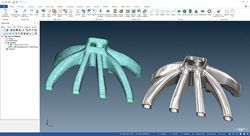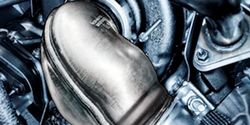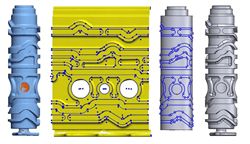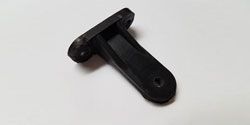Practical Reverse Engineering - Choosing the Right Tools for the Job
In the big picture, RE is a subset of digital measurement, which is the driver behind other manufacturing applications, including quality inspection, tool building, assembly guidance, and more.
Reverse Engineering for a Model-Based World
The list of reverse engineering applications is long and will continue to grow as engineers create new and creative ways to use the technology.
3D Systems Announces First-to-Market Enhancements to Reverse Engineering Software - Enabling Increased Efficiency & Accuracy across Broad Application Portfolio
-Unique unroll/reroll function in Geomagic® Design X enables a new modeling workflow for complex revolved parts resulting in a 94% efficiency improvement.
-Geomagic Design X's new features for hybrid surfacing workflows accelerate productivity, improve downstream CAD re-usability
Rebuilding Components With Reverse Engineering
Rebuilding components with Reverse Engineering, LS technology and Windform® composite materials: how advanced technologies allow companies to save time and money.
Records 1 to 4 of 4
Featured Product

Super Air Knife Replaces Blowers & Saves Energy
Super Air Knife reduces compressed air usage & noise when compared to other blowoffs. The Super Air Knife offers a more efficient way to clean, dry or cool parts, webs or conveyors. It delivers a uniform sheet of laminar airflow across entire length.
https://exair.co/184_523
Manufacturing and Automation - Featured Company

Parvalux Electric Motors Ltd
Parvalux is a leading global manufacturer of geared motor solutions with over 70 years' experience in creating the perfect combination of motor and gearbox to match the customer's application. Whilst we offer thousands of standard options we can easily customize any motor or gearbox to meet your exact requirements at no or minimal extra cost. Our design team can work closely with your own to optimize your solution for your application helping you to secure a genuine competitive advantage in your market. Our products are found in hundreds of applications but we are particularly strong in healthcare, leisure, mobility, transport, and a diverse range of industrial applications.




